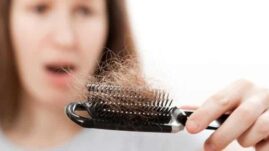The way your blood sugars affect your skin is so slow and so gradual, it can be easy to forget that complications of diabetes can appear in this part of the body. High blood sugars, in particular, can lead to skin conditions that develop slowly.
Itchy skin is one of those conditions.
In this article, we’ll look at how diabetes can cause itchy skin and available treatment options.
How diabetes can cause itchy skin
Diabetes-related skin conditions are typically the result of persistently high blood sugar levels. The American Diabetes Association explains that persistently high blood sugar levels will:
- Feed and fuel the growth of fungus
- Damage and destroy the cells of your skin
- Reduce the flow of oxygen required for the maintenance and healing of skin
- Severely increase the risk of infection in minor cuts, blisters, scrapes
When it comes to itchy skin and diabetes, there are three causes that result from high blood sugar levels:
- Growth of fungus
- Severe dry skin
- Reduced blood circulation
- Diabetic neuropathy
Let’s take a closer look at these four sources of itchiness.
Fungal Infections
You’ve probably heard of yeast infections in regard to a women’s genital health issue, but people with diabetes can develop yeast infections in a variety of other locations on their bodies.
The itchiness associated with the growth of fungus can often feel like an extreme burning along with extreme itchiness.
Referred to as “Candida albicans,” this fungal infection is fueled and fed by the excess sugar in your blood. Depending on the location of the body, it can also be referred to as:
- Vaginal yeast infection
- Jock itch
- Athlete’s foot
- Ringworm
Locations of your body that can be affected by fungal infections include:
- Moist folds in the skin (between rolls of body fat, for example)
- Underneath the lower portion of your breasts
- Around your nails
- Between your fingers and toes
- In the corners of your mouth
- Under the foreskin in uncircumcised men
- In and around the vagina in women
- In your armpits
- In and around your groin area
There are a few things all of these locations have in common: they are generally moist and less exposed to fresh air.
When your blood sugars are running higher, that excess glucose in your bloodstream becomes the breeding ground for the growth of itchy, relentless fungus.
Treating fungal infections in people with diabetes
A fungal infection is not something that will simply go away on its own. You’ll likely find the itchiness and burning so unbearable, you’ll be desperate for treatment.
Here are three guidelines for managing a fungal infection:
Improve your blood sugar levels
Using medication to treat the area affected by fungus growth will only do so much if your blood sugars are still persistently high. You need to address your blood sugars. If they continue to be high, you will likely continue to face fungus issues.
Unless your high blood sugars were a temporary issue you had to endure (because of illness, for example, or taking a steroid for an injury), you should call your diabetes healthcare team immediately to adjust your medications and reduce your blood sugars as quickly as possible.
Get the right medication for the right type of fungus
You may need to consult a dermatologist or your local pharmacist to be sure you’re using the right anti-fungal treatment option for the type of fungus you’re dealing with.
Treatments for yeast infections are fairly obvious (Vagisil, for example, is a popular over-the-counter option), but more severe yeast infections may require a visit to your gynecologist and a prescription-strength treatment option.
There are topical ointments, capsules to swallow, suppositories, lotions — the list goes on and on — so you need to make sure you’re using the right treatment for the right type of fungal infection.
(And again, part of this medication process should include adjusting your diabetes meds so your blood sugars don’t continue to induce fungal infections.)
Improve your self-care skin habits
For fungal infections developing under your breasts or within folds of skin, this is a big sign that your bathing and self-care habits need an upgrade. Overall, the goal is to reduce or prevent moisture from sitting on your skin for long periods of time.
For instance, you could:
- Change your underwear and/or socks halfway through the day to reduce moisture.
- Thoroughly wash and/or dry your body off after exercising.
- For persistent sweating after exercise, consider taking a quick cool shower to reduce your body temperature and reduce your post-workout sweating.
- Wash your hands thoroughly several times a day.
- If you wear a “daily” panty-liner, be sure to change it more often.
- Wear a body-suit that prevents moisture from accumulating between your thighs and crotch area.
- Wear a bra or torso garment that thoroughly lifts the breast off your abdomen and separates the two areas with fabric.
- If you wear diapers, change your diaper more often — even if it is clean.
- Losing weight will help reduce the number of areas where moisture can accumulate.
Severe dry skin
Dry skin may sound like no big deal, but it can become severe enough that it creates a great deal of uncomfortable or painful itching and burning.
It is possible that your dry skin may have nothing to do with your diabetes — especially if your blood sugars are in a generally healthy range. However, if you do struggle with persistently high blood sugar levels, they are likely causing or worsening your dry skin.
Treating severe dry skin
Treating severe dry skin in people with diabetes can be a combination of simple and complicated.
Improve your blood sugar levels
Above all else, it’s critical to work with your healthcare team to lower your blood sugar levels. When your blood sugar levels are persistently high, your blood flow is limited and your skin isn’t getting the healthy nutrients and oxygen it needs to thrive and heal each day.
Improving your overall blood sugars is not an easy task. It will require dedication, discipline, patience, and determination!
Improve your skin-care routine
The easier part is making simple changes to your skin-care routine:
- Reduce how often you take showers or baths, especially in the dryer winter months.
- Avoid taking overly hot showers which can further damage and dry out your skin.
- Use a “mild” soap — and look closely at the ingredients in your soap.
- Avoid soap and body products containing fragrances, colors, and other commercial additives that don’t serve the well-being of your skin.
- Apply a moisturizer after every bath or shower — and perhaps a second time during the day in the dryer winter months.
- Do your research: are the products you’re using to wash and moisturize your skin as natural as possible? When it comes to quality in the ingredients of skin products, less is more!
If your itching and dry skin escalate to a degree that isn’t soothed by lotions and leaves you feeling remarkably uncomfortable, contact your healthcare team immediately for a referral to a dermatologist!
Poor blood circulation: stasis dermatitis or varicose eczema
Stasis dermatitis (also known as “varicose eczema” or “venous eczema” or “gravitational eczema”) is a condition that can result from poor blood circulation.
For people with diabetes, poor blood circulation is a known complication, particularly in those with persistently high blood sugar levels.
What is stasis dermatitis?
For stasis dermatitis, the valves within your veins become weaker due to the lack of blood flow. Eventually, blood can actually leak from your veins into the muscle, fat, and skin tissue in your legs.
Stasis dermatitis usually develops in the lower part of your body — your legs, feet, and eventually your calves. It can develop in other parts of your body, like your hands, arms, and face, too.
A complete list of symptoms for stasis dermatitis includes:
- Severe itchiness
- Swelling that increases towards the end of your day, and decreases while you sleep
- Very visible varicose veins (thick purple and red lines on your skin)
- Crusty, red skin
- Dry, cracked skin
- An overall heaviness or soreness in the affected area, especially after standing or walking for a longer period of time
- Painful to touch, in more severe degrees of the condition
The condition usually gets worse if ignored, and you may notice those areas of skin become thicker and harder over time and become more visibly red and irritated.
Treating stasis dermatitis
The National Eczema Organization (NEA) stresses that stasis dermatitis will not improve until the underlying cause of the condition is addressed.
In people with diabetes, the biggest culprit is persistently high blood sugars.
Improve your blood sugar levels
This means your first action towards treatment is to contact your diabetes healthcare team and ask for the help you need to adjust your medications, nutrition, and other health-related habits to improve your blood sugar levels.
Remember, even a small change in medication dosages can have a big impact on blood sugar levels! Don’t hesitate to ask for help in making these changes. Even if you aren’t ready to make changes in how you eat or exercise, you have plenty of options to lower your blood sugar levels as quickly as possible.
Use a topical steroid or other prescribed topical treatments
A topical steroid can bring quick relief for many cases of stasis dermatitis and would be prescribed by your doctor or a dermatologist.
“Sometimes covering the steroid with a wet or dry wrap or an Unna boot can greatly assist in severe cases,” explains the NEO. “An Unna boot is a type of gauze bandage with healing medications in it and provides compression to help with fluid build-up.”
For cases where topical steroids aren’t appropriate — or if they’ve already been used for a length of time — your doctor can proscribe other topical medications like tacrolimus or pimecrolimus.
Wear pressure stockings
The NEO also recommends wearing pressure stockings to improve blood flow and help prevent further ruptures and leakages in your veins.
We have reviewed the best compression socks for people with diabetes.
Have ruptured or leaking veins surgically repaired
For more severe cases of ruptured and leaking veins, surgery may be necessary — but surgery isn’t necessarily an option for everyone.
Diabetic neuropathy
Diabetic neuropathy is a serious condition that can develop when high blood glucose levels cause damage to nerve fibers, particularly those in the feet and hands.
Some of the earliest signs of neuropathy include itchiness, burning, and tingling in the affected areas, so it’s important to contact your doctor if you are experiencing any of these symptoms.
To learn more about neuropathy, read Diabetic Neuropathy: Symptoms & Treatment Options.
What you can do to avoid diabetes-related itching
At the end of the day, all of these skin conditions can be avoided with reasonable blood sugar management. You don’t have to be perfect — everyone experiences high and low blood sugars.
The American Diabetes Association recommends aiming for an A1c at or below 7.0 percent to reduce your risk of developing any and all diabetes complications.




PS Doff
A balanced diet, combined with adequate supplies of all vitamins and minerals is a major factor in maintaining health. Skin is the just largest and most visible organ of the body.
Jan H
This sounds weird, but I use a hair dryer on low, cool setting and dry those areas that tend to stay moist—panty line areas, bra line and it really seems to help. 🙂 Of course, the less easier way but more effective is keeping your sugars low.
Pam Caruso
I have diabetic neuropathy in my feet and hands. It is worse in my toes and feet. Sometimes l itch so bad l have like scabs in my head. My blood sugars have been a little off lately, but they were spot on for sometime and my feet still hurt. I take a shower every other day. I wear compression socks and good shoes. It is maddening. I take Gabapentin for my pain. I don’t know what else to do sometimes I feel like I’m going out of my mind.
Christel Oerum
Pam, that does sound unbearable. I don’t have a good answer for you except for talking to your doctor and explore if there’s any medication available that can soothe the pain and itching. This condition can be relentless
Carol
I have nerve damage to my feet and I’m on lyrics and cymbolta
PS Doff
“Spot on” blood sugars from finger stick tests isn’t a reliable metric for blood sugar control unless done before, 45 minutes after, and and between meals. Neither pre-prandial tests, nor the A1C shows how often, how high, how long or how low you go. A history of chronic, frequent highs is associated with all “diabetes complications”. Some of the complications are reversible in early stages, but effects are cumulative and the recovery period is long. Short term control that doesn’t address the cause won’t reverse the complications.
Bob
Just wanted to add that the number one thing that helps me eat vastly less fructose (fruit sugar) is high levels of cardio exercise. Getting my heart pumping fast, even for short intervals is miraculous. You just feel you don’t need so much and are satiated with much less. Of course the only way to do this is on an empty stomach. I try to start my day with nothing but room temperature purified water, then do some cardio. No better way to start your day. Doesn’t have to be as soon as you wake up of course. I like to limber up for a couple hours before. I have always found breakfast the absolute worst meal of the day – just bogs you down. I’m in my early 60’s and have kept my waist with 1″ my entire life.
Eileen
Hi i am newly diagnosed with diabetes. I seem to have developed bad itching all over since starting diabetic medication I am on Diaglucide 2x60mg the morning Do you think it could be the tablet ?
Hadayat
How can I relief skin itching , I am a type 2 diabetic pt. – age 53 years – on oral-hypoglycemic agent
Christel Oerum
There is some good advice in the article. If it’s severe itching please consult with your doctor or a dermatologist
Bob
The article says that hot water/shower makes the fungus condition worse. I find it heavenly when I’m itchy. I don’t think it makes my condition worse but its difficult to say. What makes it better though is watching my Glycemic Index and not eating much fruit, especially citrus! (I never use any type of sweeteners like white or brown sugar, honey, barley malt or maple syrup) and never eat out so I know what I’m eating. This itchiness is caused by us to its important to fix it the same way. Try having a very low GI meal first and see how the itchiness is. No or very little fruit and absolutely no sweeteners. Obviously refined grains (multi-grain or wheat flour bread is usually mostly refined flour), sauces, white pasta as that will cause your blood sugar levels to spike then crash. THEN see how you feel until you feel hungry again for the next meal. This will place you about 20 – 24 hours after yesterday’s dinner. That’s enough time to test yourself. Also focus on how your mouth feels in the morning. I find if I eat lots of fruit at night my mouth is very dry in the morning. I have horrible dental problems because of this; several teeth have fallen out (but thankfully no pain).
Stacy Gomes
Very Nice Blog. Nicely Written. Well Decribed .
Pervaiz
Bloating and constipation diabetes how i can solved stomach problem
Christel Oerum
If you have consistent bloating and constipation you should see a doctor. It could be due to a medication you take, something you eat or another issue